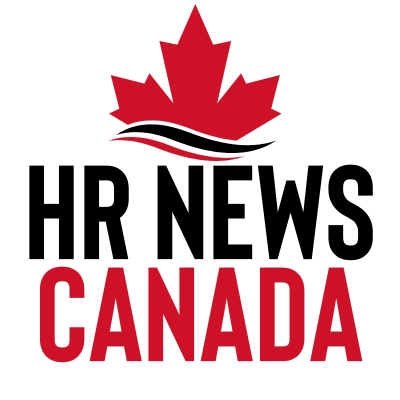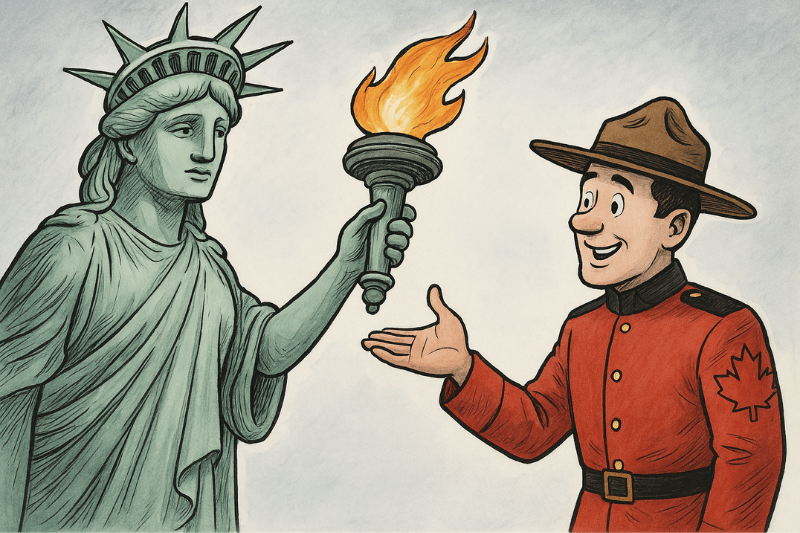A dramatic shift is unfolding in global job mobility. Beginning last August and accelerating into 2025, job seekers’ interest in foreign positions has plummeted across major economies – including Canada, where foreign interest has fallen from its peak of 7.8% in July 2023, according to new research from Indeed.
But despite that lagging interest, there is a rare opportunity here for Canadian employers and policymakers – if we’re smart enough to capitalize on it.
America’s increasingly restrictive immigration stance has created what might be the most significant opportunity for a reverse brain drain in decades. In the U.S., foreign job seeker interest peaked in August 2023 at 2.4% before steadily declining to 1.7% by March 2025, likely in response to anti-immigrant rhetoric during the 2024 election and the rapid policy shifts that followed after Donald Trump took office.
The evidence isn’t merely in data but in decisions. Three distinguished Yale professors – Marci Shore, Timothy Snyder and Jason Stanley, experts in authoritarianism – recently announced they’re leaving their prestigious positions to join the University of Toronto via a New York Times opinion piece.
Professor Stanley described his move as “an act of protest against the Trump administration’s attacks on civil liberties,” while Professor Shore sees “sharp regression of American democracy.”
These high-profile academic departures could be just the tip of the iceberg. Across industries, Canada suddenly has an unprecedented opening to attract top-tier talent that might otherwise have gone south.
But this window won’t stay open long. The Indeed data shows all countries experienced sharp declines in foreign interest from late 2024. In Canada specifically, the downward trend coincides with our own policy shifts, including caps on international student admissions, restrictions on work permits for dependents, and the phaseout of temporary post-pandemic worker policies.
It’s a delicate balance. No country can absorb unlimited newcomers without infrastructure challenges. While cracking down on student visa mills might be necessary, are we simultaneously creating barriers for the very high-impact talent that could transform our economy?
Five possible steps to capitalize
So how exactly can Canada seize this moment? Here are five ideas conjured up over morning coffee:
Talent fast-track: First, create a “Distinguished Talent” fast-track program specifically targeting established U.S.-based professionals in high-impact fields. British Columbia is already leading with a streamlined process for foreign-educated nurses to work while completing licensing requirements. We need similar approaches for researchers, tech entrepreneurs, healthcare specialists, and clean energy innovators.
Housing solutions: Second, match immigration policies with housing solutions. This one is out there, admittedly, but perhaps major employers could develop purpose-built rental communities in innovation corridors. Waterloo, Ont., Montreal and Vancouver could pilot immigration-linked housing developments that ensure incoming talent doesn’t exacerbate existing housing pressures.
Credential recognition: Third, expand credential recognition programs for newcomers. Ontario’s Bridge Training Program and Manitoba’s Fair Registration Practices Office provide models for helping internationally educated professionals navigate licensure requirements. We need to scale programs like these nationally.
Smart tax incentives: Fourth, create targeted tax incentives for high-skill immigration. Consider a five-year income tax reduction for individuals bringing specialized skills in critical shortage areas. We can “borrow” ideas from overseas, such as Ireland’s Special Assignee Relief Programme, which offers tax breaks to attract specialized talent. It’s a pretty successful template.
Border ‘innovation hubs’: Finally, create innovation hubs specifically designed for cross-border collaboration. Establish specialized innovation districts near the U.S. border in cities like Vancouver, Windsor, Ont., and Niagara Falls, Ont. These hubs could allow professionals to maintain U.S. connections while building careers in Canada, easing the psychological barrier of an all-or-nothing relocation decision. Once they’re exposed to Canada, they might love it enough to come over full time. These “innovation corridors” could serve as demonstration projects for talent attraction, focusing on sectors where America’s loss could be Canada’s gain: biotech, clean energy, artificial intelligence, and advanced manufacturing.
The payoff from attracting exceptional talent is enormous. When the Soviet Union collapsed in 1991, Israel welcomed more than one million Russian immigrants – many highly educated in STEM fields. This influx helped transform Israel into the “Start-up Nation,” with more companies listed on NASDAQ than any country except the U.S., Canada, and China. That’s an impressive feat for a nation with a population of less than 10 million.
Canada faces a similar opportunity moment. We need to couple recalibration of overall immigration levels with a targeted campaign to attract truly exceptional talent – the researchers, entrepreneurs, physicians, engineers, and innovators who might now be reconsidering their future in America.
The world is watching what’s happening in America, as always. Canada has always benefited from being the tolerant, stable, quiet neighbour to the north. But in this moment, we need to be more than passive recipients of talent looking for alternatives — we need to be active hunters of the world’s best.





